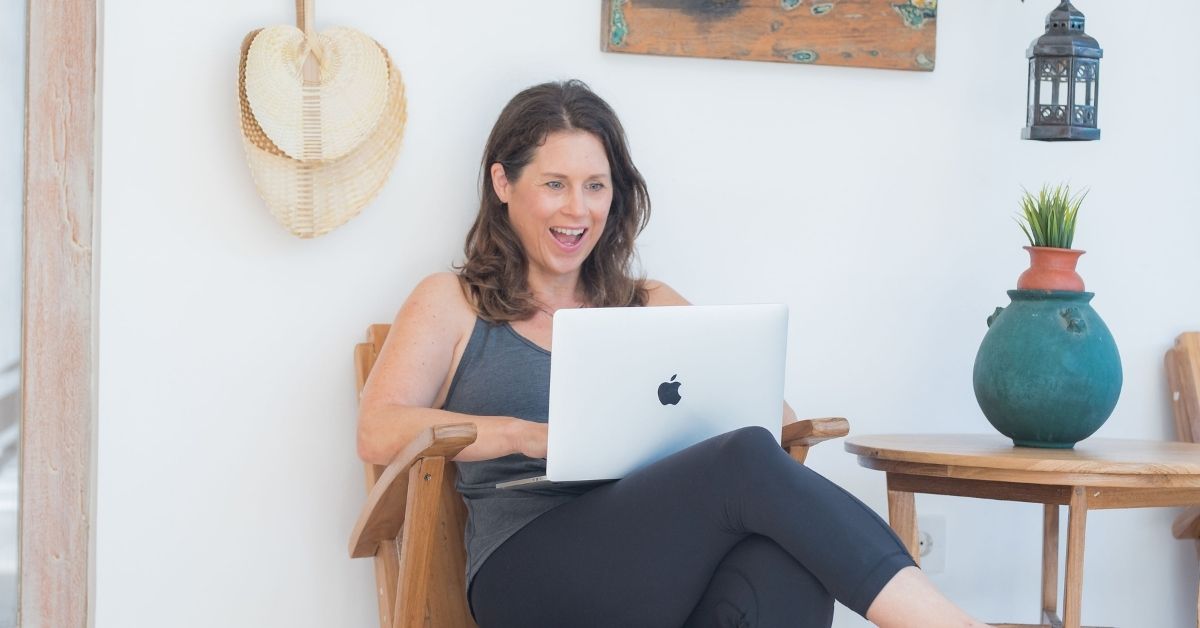Have you ever taken part in an online challenge? Whether it’s a work out challenge, an Instagram challenge, a clean eating, yoga, money or a clean house challenge – there is SOMETHING about challenges that speaks to many of us.
There’s something about the momentum of doing things as a group, seeing results quickly and the comradery that makes free challenges successful and with this post I want to help you harness the power of a challenge and use it to grow your reach and your profits.
Why you should run a free yoga challenge
Hosting a challenge is the biggest and easiest way to connect and engage with people who are specifically interested in learning something that you can teach for FREE.
When I run my first challenge I used it to lead participants into a pitch for a new offer I’d created. I hosted a 5-day challenge, “5 Days to Your First Digital Product”, and then invited all challengers to join my online course to learn more on how to set up your yoga online biz and create digital products. This is what a lot of people do.
If you don’t have a product yet, you could also create a challenge around a topic you’re considering creating an offer around. This way you can test your idea and see how your audience responds to your offer.
You can also use a challenge to build your email list. It’s one of the easiest ways to grow your list and connects you to the right people while giving you a chance (and excuse) to drop into their inbox or lives on a frequent basis throughout the challenge.
This is also why I don’t recommend hosting a challenge only on Instagram. Hosting a free challenge that doesn’t allow you to land in inboxes isn’t going to move the needle in your business.
What should your challenge be about?
Here’s the first question you need to ask yourself:
What’s something that my ideal client is struggling with that I can provide insight, support, and action on in a fixed time?
Get clear on the results you want to get your participants. If someone commits for your challenge what can they expect the outcome to be.
For my challenge example, if someone committed to 5 days of following the challenge, they would have a validated idea for their online course, know how deliver it and a plan how to bring it to live.
Paint the end picture and then break down the daily tasks necessary to ensure your participants will hit that.
Here it’s important that you create content that establishes you as an expert and gets the promised results, but at the same time is not overwhelming your audience.
A very common mistake is putting simply too much content into the challenge. When you expect your challengers to do a 20-minute guided mediation each day, a 1-hour yoga class and cook 3 meals, you set them up for failure.
Seriously, who has time for that kind of commitment?
I think it’s reasonable if your participants spend 20 to 30 minutes a day on your challenge, not longer.
Give away good content and think about quick wins: things that are easy for your participants to complete that will get them one step closer to that end result.
Don’t worry about giving away your best content (that will likely be in your offer) but use a challenge as a chance to show people that they can learn new things, they can commit to completing something, and they are able to get results based on what you teach.
How long should your challenge be?
When it comes to a challenge, you want to make sure your challenge delivers a result.
One of the best aspects of challenges is the ability to get people quick results through committing to something for a certain time aspect.
A 5-day challenge seems to be the sweet spot. A lot of people make the mistake of thinking longer is better but think about it: if you host a 30-day challenge, every single day you will lose participants because there is a natural attrition rate when it comes to sticking to something.
We are all so busy these days – would you have time to commit to something to do every day? You would need to be really, really invested.
You want to create something that people can truly commit to and see change if they stick it out without the possibility of making them feel like a failure if they don’t complete it. Most people can commit to a shorter time frame and as a bonus, you get to create less content.
How to deliver your challenge
You want to deliver your challenge via email so that you can firstly gather participants email addresses and they can catch up if they miss a day without feeling lost or overwhelmed.
It’s also very simple to set up. All you need to do is send an email every day to your challenge participants with the task of the day and some more background (your teaching).
Optionally you can also link to a video that you post on YouTube or Vimeo from your emails or to a PDF document that they can download.
For example, if you do a yoga challenge where you go through a certain pose each day, I would definitely add a video because it will be so much more helpful for your students to see the pose in motion and you can explain it much better than in text.
Another way to turbo-charge your challenge is to add a community component like a private Facebook group for people who are in the challenge. A Facebook group is awesome in terms of strategy (but more work) because they bring challengers together and foster a community.
And that’s it – that’s how you set up a free challenge!
